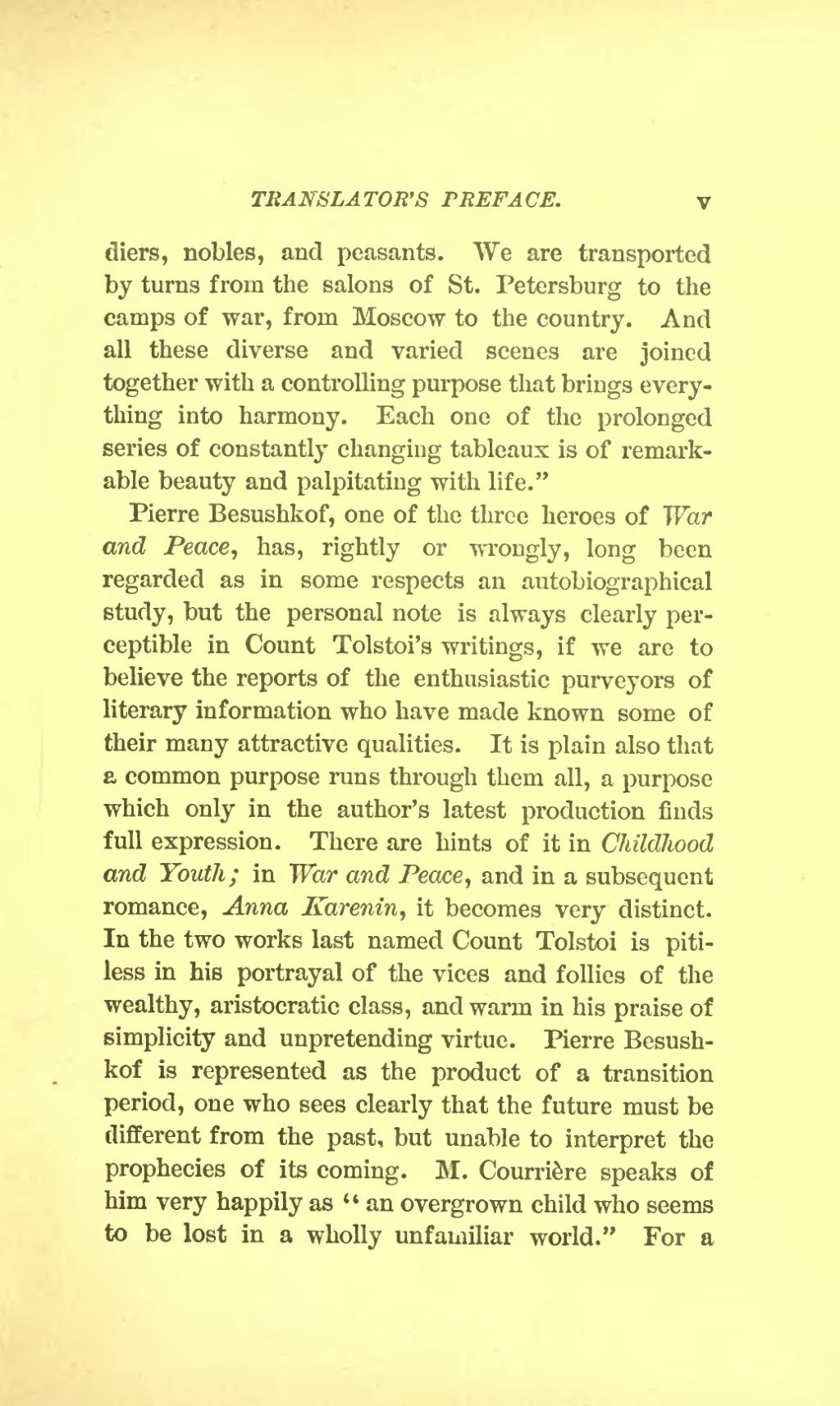diers, nobles, and peasants. We are transported by turns from the salons of St. Petersburg to the camps of war, from Moscow to the country. And all these diverse and varied scenes are joined together with a controlling purpose that brings everything into harmony. Each one of the prolonged series of constantly changing tableaux is of remarkable beauty and palpitating with life.”
Pierre Besushkof, one of the three heroes of War and Peace, has, rightly or wrongly, long been regarded as in some respects an autobiographical study, but the personal note is always clearly perceptible in Count Tolstoi’s writings, if we are to believe the reports of the enthusiastic purveyors of literary information who have made known some of their many attractive qualities. It is plain also that a common purpose runs through them all, a purpose which only in the author’s latest production finds full expression. There are hints of it in Childhood and Youth; in War and Peace, and in a subsequent romance, Anna Karenin, it becomes very distinct. In the two works last named Count Tolstoi is pitiless in his portrayal of the vices and follies of the wealthy, aristocratic class, and warm in his praise of simplicity and unpretending virtue. Pierre Besushkof is represented as the product of a transition period, one who sees clearly that the future must be different from the past, but unable to interpret the prophecies of its coming. M. Courrière speaks of him very happily as “an overgrown child who seems to be lost in a wholly unfamiliar world.” For a
